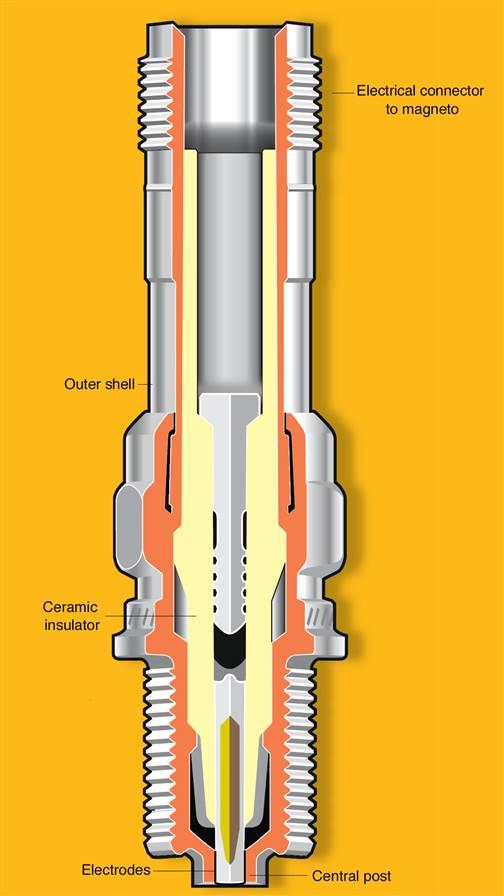 Think back to fifth-grade science. What are the three elements you need to generate a fire? A source of fuel, oxygen, and heat. A-plus.
Think back to fifth-grade science. What are the three elements you need to generate a fire? A source of fuel, oxygen, and heat. A-plus.
The internal combustion engine is so-called because power is generated through a combustion process. In order to generate fire, the engine brings in air and dumps in fuel. But nothing else would happen if it weren’t for the source of heat, an ignition source also known as spark plugs.
Spark plugs are metal-and-ceramic cylinders that screw into the engine cylinders and provide the heat necessary to have a combustion process. How well that spark plug performs directly affects how well the engine runs.
Essentially nothing more than a device to meter out electrical energy, aircraft spark plugs look slightly different than most car spark plugs. They have two electrodes (prongs) on either side of a center electrode (central post). The gap between the electrodes creates the spark that ignites the fuel and air mixture. The aircraft’s ignition system, usually a pair of magnetos, provides the electrical current to the spark plugs.
Almost every certificated aircraft has two spark plugs per cylinder. That’s for more efficient ignition, and it serves as basic safety redundancy. If one spark plug fails the cylinder keeps firing. Without a back-up, a failed plug would cause the cylinder to stop producing power, which would give the airplane the shakes—not to mention a big loss of power. You can see this efficiency in action during a pretakeoff magneto check. When switching to left or right you are taking half of the spark plugs off line, resulting in a drop in power.

